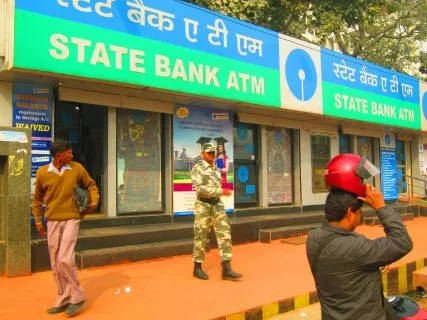
Indian banks' non-performing assets more than doubles in two years
Gross NPAs grew from US$47b in March 2015 to US$110b this year.
According to a report by CARE Ratings, the asset quality of the Indian banks saw a sharp deterioration in the last three years with sharp increase in NPAs in the last two years.
The Gross NPAs of the banks studied by CARE Ratings increased from around Rs.3 lakh crore (US$47b) as on March 31, 2015 to nearly Rs.6 lakh crore (US$94b) as on March 31, 2016 which jumped to over Rs.7 lakh crore (US$110b) as on March 31, 2017. The overall Gross NPAs ratio increased from 4.36% as on March 31, 2015 to 9.20% as on March 31, 2017.
Here's more from CARE Ratings:
Public Sector Banks (PSBs) have witnessed a higher deterioration in asset quality as compared to the private sector players. The Gross NPA ratio for the PSBs studied by CARE Ratings increased from 4.97% as on March 31, 2015 to 11.03% as on March 31, 2017. Within the PSB space, 16 of the 21 banks studied reported Gross NPA ratio in excess of 10%.
The private sector banks which historically have shown better asset quality as compared to PSBs, continued to report relatively better asset quality numbers as compared to their public sector peers.
However, the private sector banks also witnessed deterioration in asset quality with Gross NPA ratio of private sector banks near doubling from 2.11% as on March 31, 2015 to 4.19% as on March 31, 2017. As compared to PSBs, the private sector banks continued to have strong net worth coverage to Net NPA with Net NPA to Net worth ratio of 13.03% as on March 31, 2017 as compared to high 77.52% for PSBs.
Though, the Gross NPAs of the banks have seen sharp rise over the last two years, the amount of stressed assets (Gross NPA + standard restructured assets) has remained range bound at 10% to 12% of gross advances over the three years. This indicates that the banks had exposure to the stressed assets in its books prior to FY15 and the increase in NPAs has largely been on account of slippages from the restructured assets.
An industry-wise analysis of NPAs shows that the major industries that have contributed to NPAs are metals (including iron & steel), infrastructure, engineering, textiles, construction, chemicals and gems & jewellery.




![Lorem Ipsum [ABF 1]](https://cmg-qa.s3.ap-southeast-1.amazonaws.com/s3fs-public/styles/exclusive_featured_article/public/2025-03/a_hand_pointing_to_a_futuristic_technology_5b87c9d0e3_1.png.webp?itok=2w0y1WhS)


![Cross Domain [Manu + SBR + ABF + ABR + FMCG + HBR + ]](https://cmg-qa.s3.ap-southeast-1.amazonaws.com/s3fs-public/styles/exclusive_featured_article/public/2025-01/earth-3537401_1920_4.jpg.webp?itok=WaRpTJwE)







 Advertise
Advertise

